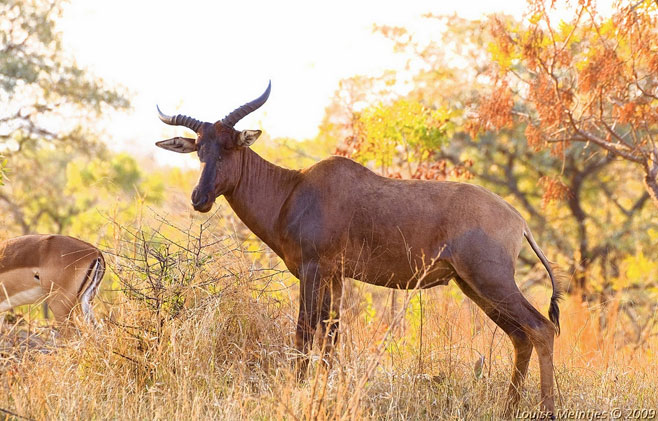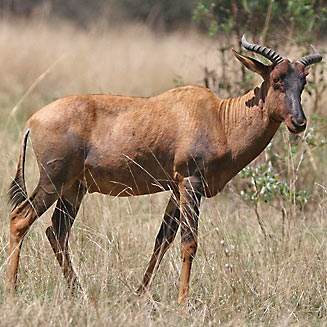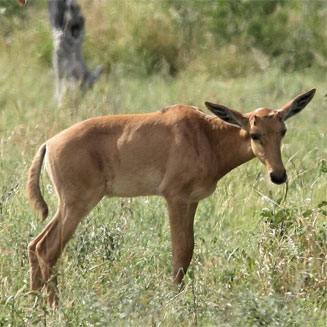|
Damaliscus lunatus (Tsessebe)
basterhartbees,
tsessebe [Afrikaans]; Leierantilope [German]; damalisque, sassaby [French]; inkolome, inkomozane [isiNdebele]; tshęntshębę [Sepedi]; tshentshebe, kgama ya
lebasetere [Sesotho]; tshęsębę, kabolę [Setswana]; nondo [Shona]; mzanxi,
inyamatane [siSwati]; ndzandzi, nondo [Xitsonga]; sebesebe [Lozi]; unsuru [Yei]; || Khamab [Nama] [Damara]
Life
>
Eukaryotes >
Opisthokonta >
Metazoa (animals) > Bilateria > Deuterostomia >
Chordata > Craniata > Vertebrata (vertebrates) >
Gnathostomata (jawed vertebrates) > Teleostomi (teleost
fish) > Osteichthyes (bony fish) > Class:
Sarcopterygii (lobe-finned fish) > Stegocephalia
(terrestrial vertebrates) > Reptiliomorpha > Amniota >
Synapsida (mammal-like reptiles) > Therapsida > Theriodontia
> Cynodontia > Mammalia (mammals)
> Placentalia (placental mammals) >
Laurasiatheria > Ferungulata > Cetartiodactyla (even-toed ungulates and cetaceans)
> Ruminantia (ruminants) > Family:
Bovidae (antelopes and buffalo) >
Subfamily: Antilopinae
 |
|
Tssessebe, Kruger National Park, South Africa. [photo
Louise Meintjes
©] |
 |
 |
|
Damaliscus lunatus (Tsessebe), Marakele
National Park, South Africa. [photo Trevor
Hardaker ©] |
Young Tsessebe, Kruger National Park, South
Africa. [photo
Dave Scott
©] |
|
